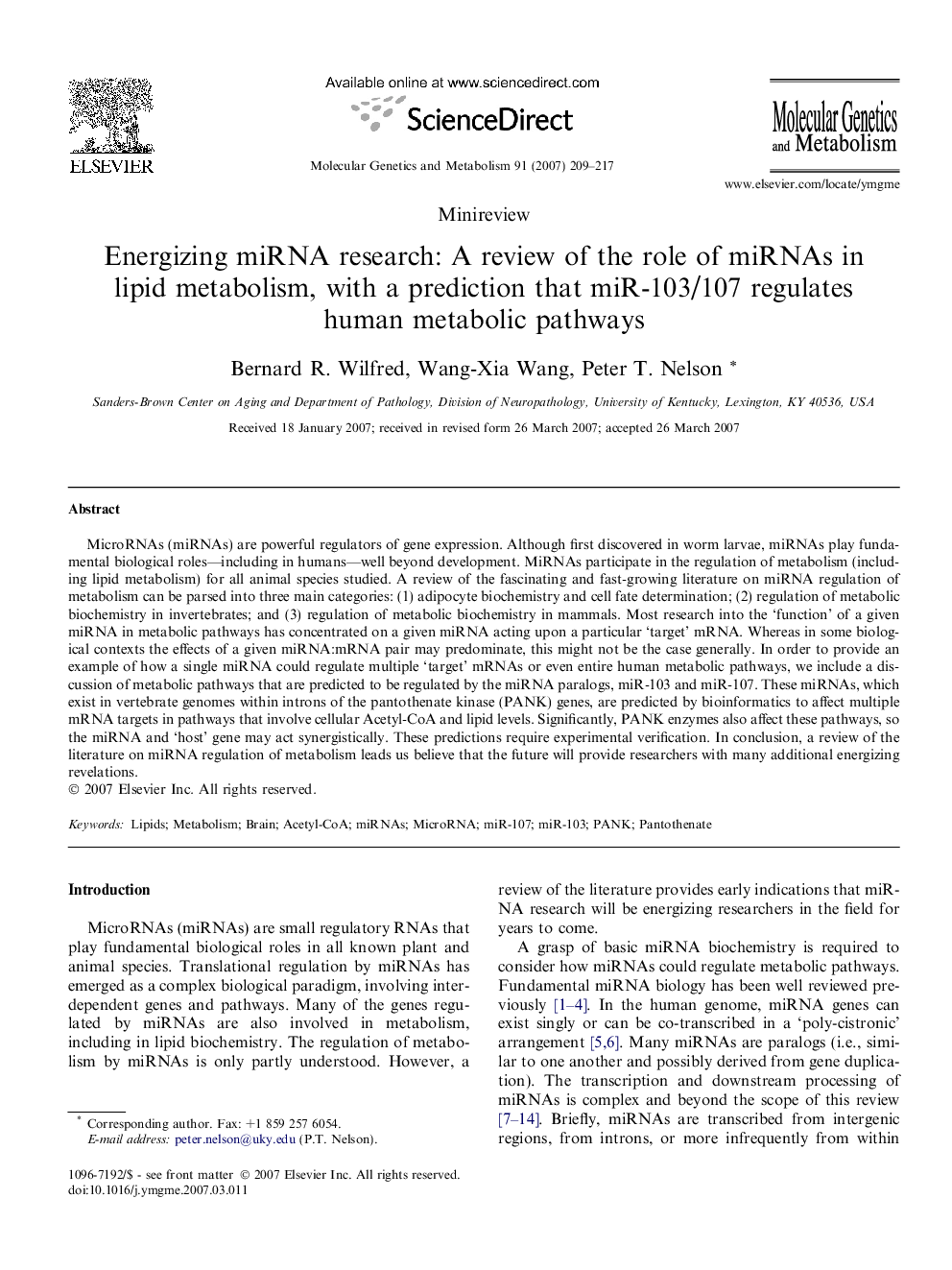| Article ID | Journal | Published Year | Pages | File Type |
|---|---|---|---|---|
| 1998904 | Molecular Genetics and Metabolism | 2007 | 9 Pages |
MicroRNAs (miRNAs) are powerful regulators of gene expression. Although first discovered in worm larvae, miRNAs play fundamental biological roles—including in humans—well beyond development. MiRNAs participate in the regulation of metabolism (including lipid metabolism) for all animal species studied. A review of the fascinating and fast-growing literature on miRNA regulation of metabolism can be parsed into three main categories: (1) adipocyte biochemistry and cell fate determination; (2) regulation of metabolic biochemistry in invertebrates; and (3) regulation of metabolic biochemistry in mammals. Most research into the ‘function’ of a given miRNA in metabolic pathways has concentrated on a given miRNA acting upon a particular ‘target’ mRNA. Whereas in some biological contexts the effects of a given miRNA:mRNA pair may predominate, this might not be the case generally. In order to provide an example of how a single miRNA could regulate multiple ‘target’ mRNAs or even entire human metabolic pathways, we include a discussion of metabolic pathways that are predicted to be regulated by the miRNA paralogs, miR-103 and miR-107. These miRNAs, which exist in vertebrate genomes within introns of the pantothenate kinase (PANK) genes, are predicted by bioinformatics to affect multiple mRNA targets in pathways that involve cellular Acetyl-CoA and lipid levels. Significantly, PANK enzymes also affect these pathways, so the miRNA and ‘host’ gene may act synergistically. These predictions require experimental verification. In conclusion, a review of the literature on miRNA regulation of metabolism leads us believe that the future will provide researchers with many additional energizing revelations.
